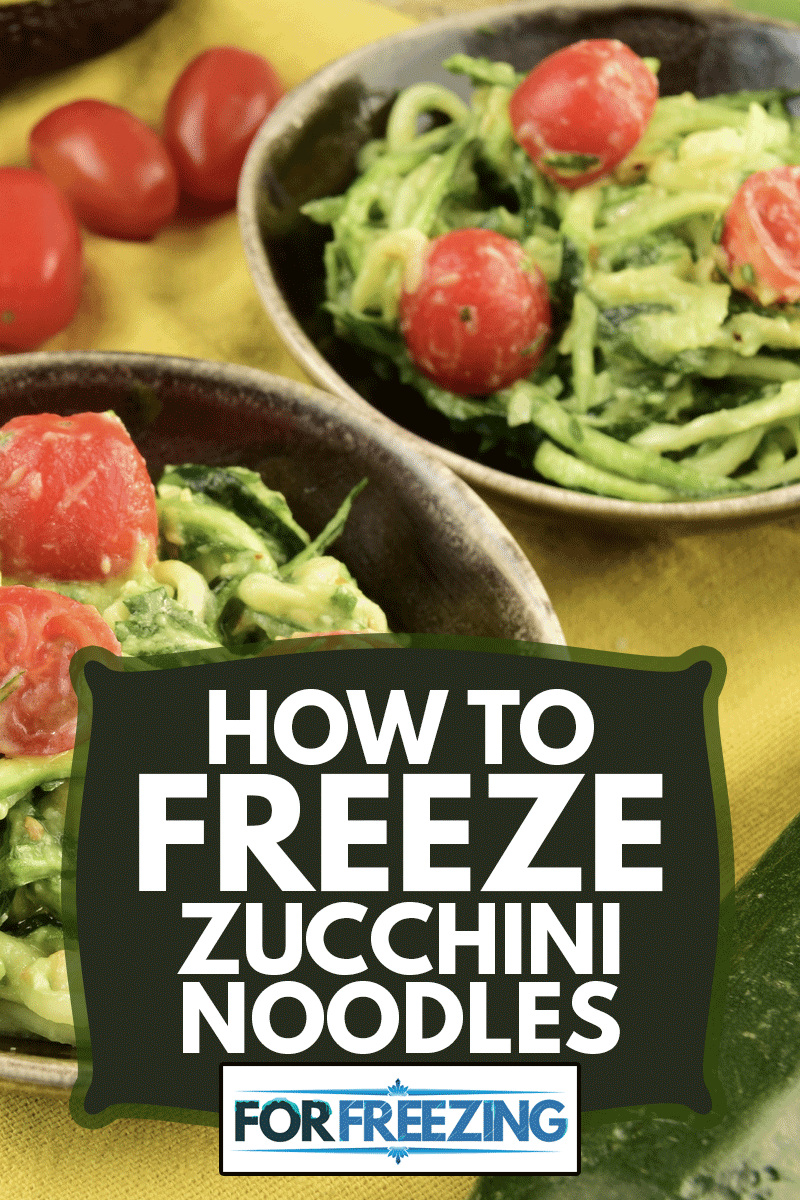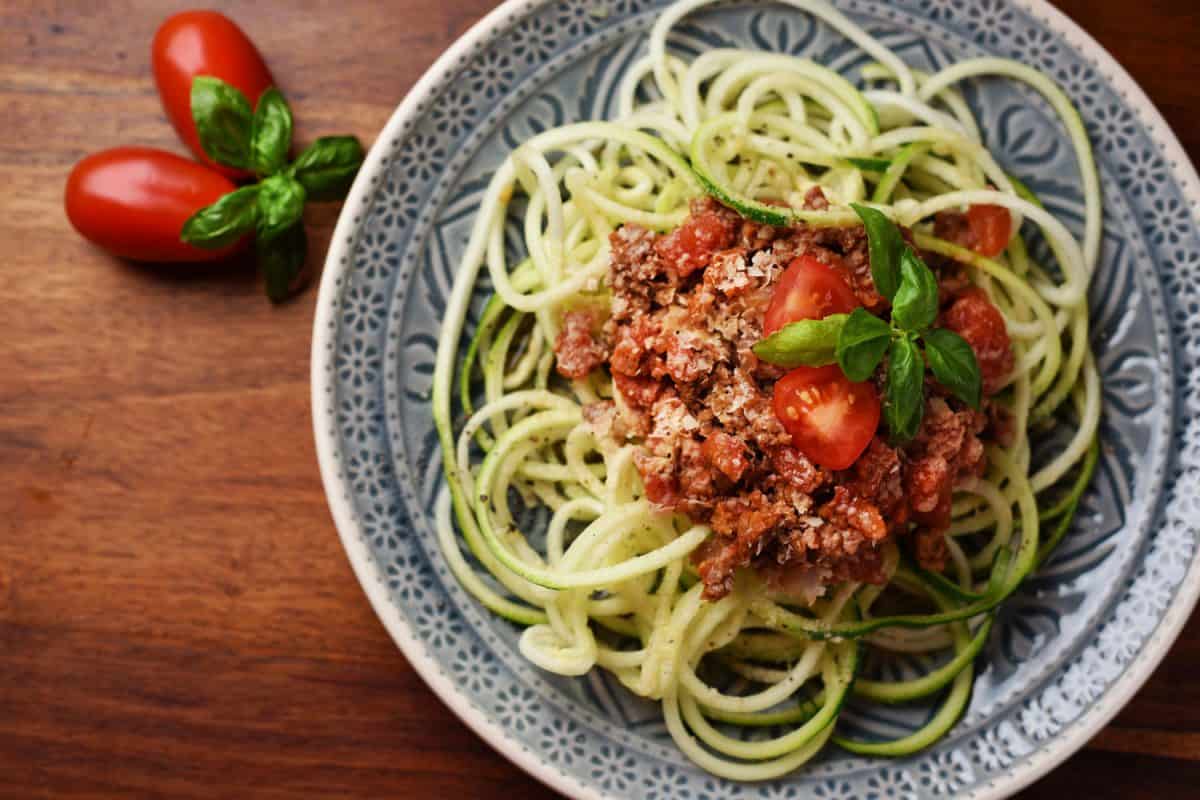Zucchini noodles, or zoodles, are probably the healthiest alternatives to wheat-based pasta. Made out of fresh zucchini, it is low on carbs yet contains nutrients your body needs. So instead of going for the regular pasta, why not stock up on zoodles instead? You only have to freeze it to keep it from going bad. We reached out to some health enthusiasts to ask how they freeze their zucchini noodles.
It turns out that the freezing methods for zucchini noodles vary, depending on preference. So, we listed two methods we recommend for you to follow:
- Dry out the zucchini noodles with salt and freeze.
- Dip the zoodles in boiling water and then freeze.
These methods are as broad and straightforward as they are. But do not worry because we detailed every step you need to take for each method in this post. Scroll down to unravel the most suitable freezing method for your taste.
NOTE: WE MAY GET A COMMISSION IF YOU DECIDE TO MAKE A PURCHASE THROUGH THESE LINKS. THERE'S ADDITIONAL NO COST TO YOU. CHECK THE BOTTOM OF THE PAGE FOR MORE INFORMATION.

How to freeze Zoodles
Before anything else, ensure that your zoodles came from fresh and clean zucchini. Whether they are homemade or bought from the market, always start by thoroughly washing your zoodle strips to remove dirt and debris.

Proceed to the following zoodle freezing steps after your preparation.
Dry out the zucchini noodles with salt and freeze
1. Cover a bowl with a towel or any water-absorbent cloth. Place the zucchini noodle strips in the bowl and sprinkle 1 to 2 tablespoons of salt. Gently mix the salt with the zoodles, making sure that the strips are well-coated. Then let it sit for at least an hour.
This process will help drain out the moisture in the zucchini to prevent the fruit from being soggy in the freezer over time.
2. After the waiting time, you might notice that the towel or cloth may appear soaked due to the extracted water. Transfer the zoodles into another bowl and squeeze the remaining liquid in them.
3. Once you feel that the strips have become a bit firm, place them on a colander covered with a dry cloth. Wrap the strips for a few minutes and wring to better squeeze the moisture out.
4. Transfer the semi-dried zucchini noodles to another piece of fabric and leave it for 1 hour for quick air dry.
5. Portion the zoodles into small amounts to allow better freezing conditions for the zoodles to retain most of their flavor and texture. Plus, it may come in handy when you want to use some for your recipes later on without thawing all of them.
6. Pack each portion into a resealable freezer bag and press as much air out of the bag. You can use a vacuum sealer or the water sealing technique detailed here.
7. Label each zoodle packs with the date you are freezing them on and the expected expiration date. You can store your zucchini noodles for up to 1 year in the freezer.
Dip the zoodles in boiling water and then freeze
1. Half-fill a deep pan or casserole with water and bring it to a boil.
2. While waiting for the water to boil, prepare a bowl of cold water, preferably with ice cubes. You will use this to cool down the blanched zoodles. Also, prepare a baking tray and cover it with a kitchen napkin.
3. Place the zucchini noodles in a colander and dip them in the boiling water. Immerse it for at least 2 minutes if the zoodle strands are thin slices and 4 minutes if they are a bit thick.
4. After the time, immediately remove the colander of zoodles and immerse it in the bowl of iced water. Doing so will help stop the cooking process and retain its crunchiness.
5. Lay the zoodles on the tray you prepared beforehand. Make sure there is space between each zoodle strip to ensure faster air drying. You may pat them with a clean towel to remove excess moisture and hasten the drying process.
6. While still on the tray, place the zucchini noodles in the freezer for at least 30 minutes to 1 hour for a flash freeze.
Flash freezing will help prevent each zoodle from sticking together when stored in the freezer for long periods.
7. Lastly, pack the zucchini noodles in portions with a freezer-ready resealable bag, label accordingly, and freeze.
Can I freeze raw zucchini noodles?
As you have read above, we recommend extracting the water content of zucchini first or blanching the fruit before freezing.
You can freeze raw zucchini noodles. But remember that zucchini contains extremely high moisture, accounting for 95% of its overall composition.
Freezing raw zucchini noodles immediately without properly treating them using either of the two methods above results in soggy, flavorless zoodles once thawed.
Do you have to blanch shredded zucchini before freezing?
Zucchini, like most fruits and vegetables, should be blanched before freezing.
Blanching is an essential step in freezing zucchini as this ensures that it can stay longer in the freezer. It preserves the texture, flavor, and nutrition in the zucchini. In addition, it hinders the development of the aging enzymes common in all fruits and vegetables.
When you freeze a zucchini without blanching, these enzymes remain active and continues to gnaw away at the freshness of the zucchini. This causes the zucchini to still mature, albeit slowly, even when frozen. Ultimately, you are left with an undesirably soggy and mushy texture after thawing it.
That’s why we suggest that you always dip your zucchini in boiling water for a few minutes before freezing to keep the flavor and crunchy texture.
Nevertheless, if you don’t plan on keeping the zucchini in the freezer for more than 5 days, you can freeze it immediately without blanching it to save your precious time.
How do you freeze freshly shredded zucchini?
Now, if your style is shredded zucchini instead of zoodles, all you need to do is immediately stack the shredded zucchini in the freezer bag, squeeze the air out, label, and freeze. It’s that easy.
For extra vacuum-sealing capability, try using FoodSaver bags, containers, and vacuum sealers. It guarantees that your zucchini noodles and shreds or any other food you want to store stays fresh longer.
Defrosting is also simple. Remove the zoodles from the freezer and place them in the fridge for 8 hours or overnight to thaw naturally. You may also use the microwave for a quick thaw.
But keep in mind that you can only freeze shredded zucchini for about 8 to 10 months because of the presence of moisture and aging enzyme.
Does spiralized zucchini freeze well?
How do you want your zucchini noodles to look? Most of you would flat out agree that it should appear like regular pasta, right? So you choose to use a spiralizer to create your zoodles.
It’s all good that way until you freeze it. Spiralized zucchini does not freeze well. And the reason still comes down to its water content. Unlike sliced zoodles where you can squeeze the water out of them, spiralized zucchinis are unstable and crumble fast when pressure is exerted on them, so the excess water stays in them.
Even Inspiralized blogger Ali Maffucci said that spiralized zucchini noodles aren’t ideal for freezing because it wilts and becomes mushy after defrosting.
Final words

Preparing your zucchini noodles for freezing only requires you to knead them with salt to extract the water content or blanch for a few minutes. It’s not recommended to freeze raw zucchini noodles as you risk losing the texture and flavor. For best freezing outcomes, putting the zoodles in FoodSaver bags helps keep them fresh and avoids waste. So what are you waiting for? Keep on making extra zoodles for your future recipes without worry.



